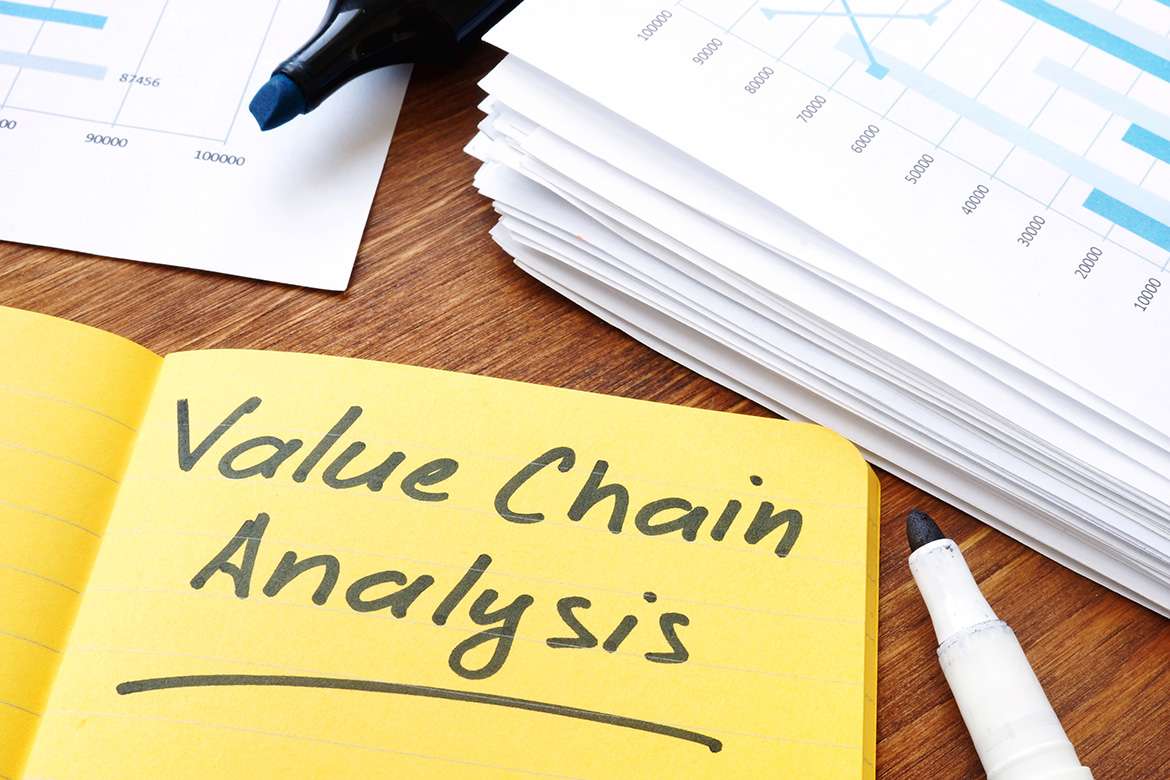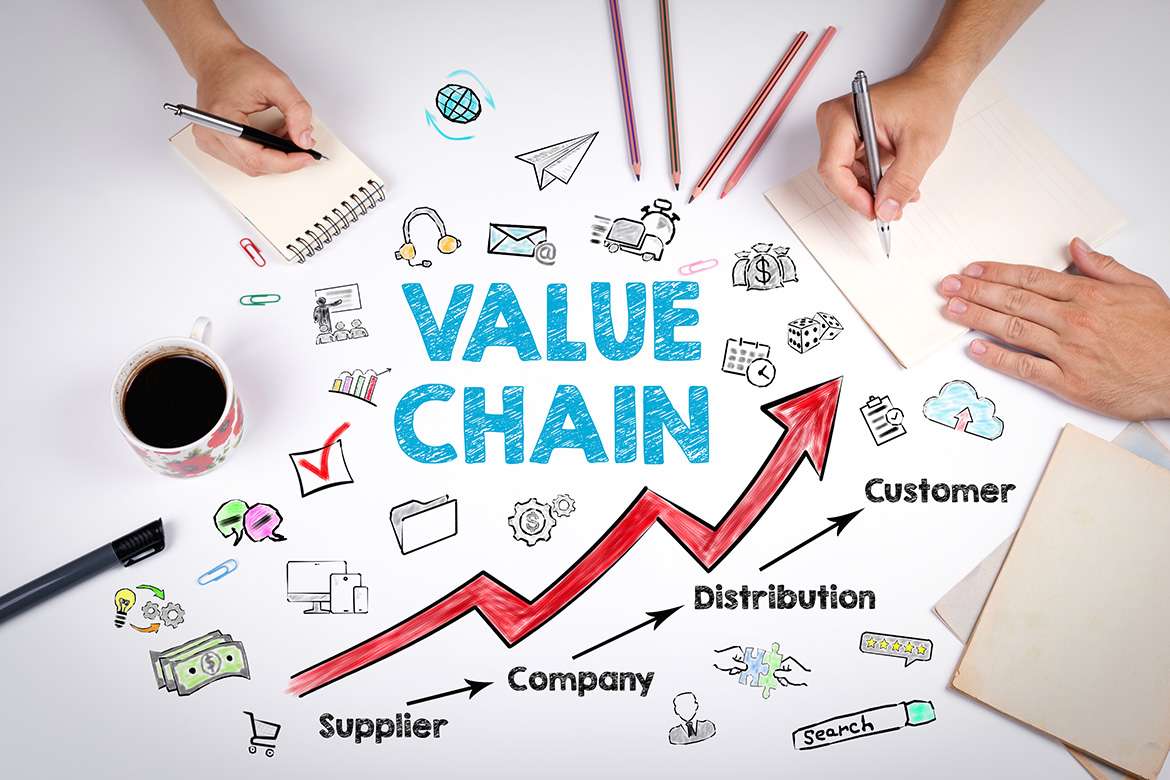A value chain analysis is a business model that defines the full range of activities needed to create a product or service.
All steps that a company follows from concept to distribution of the final good, including product design, R&D, procurement, manufacturing, marketing, sales, advertising, make up the value chain.
Michael E. Porter, of Harvard Business School, introduced the concept of a value chain in his book, Competitive Advantage: Creating and Sustaining Superior Performance (Free Press, 1998). Porter splits a business’s activities into two categories: Primary and Support. Specific activities in each category will vary according to the industry.
Primary activities consist of five components, and all are essential for adding value and creating competitive advantage:
Inbound logistics: Functions like receiving, warehousing, and managing inventory.
Operations: Procedures for converting raw materials into a finished product.
Outbound logistics: Activities to distribute a final product to a consumer.
Marketing and sales: Strategies to enhance visibility and target appropriate customers -these may include advertising, promotion, and pricing.
Service: Programs to maintain products and enhance consumer experience—customer service, maintenance, repair, refund, and exchange.
Support Activities help make the primary activities more efficient. When you increase the efficiency of any of the four support activities, it benefits at least one of the five primary activities. These support activities are generally denoted as overhead costs on a company’s income statement:
Procurement: How a company obtains raw materials.
Technological development: Used during research and development (R&D) stage. Designing and developing manufacturing techniques and automating processes.
Human resources (HR) management: Hiring and retaining employees who will fulfil business strategy; and help design, market, and sell the product.

Infrastructure: Company systems, the structure of its management team -planning, accounting, finance, and quality control.
A company carries a value chain analysis by evaluating the detailed procedures involved in each step of the business in order to achieve the best possible cost and identify the most beneficial practices for all core activities while reducing time cycles. Increasing production efficiency, and delivering the best outcome at a minimum cost, is the purpose of such and analysis.
The final result of a value chain analysis is a more competitive, efficient business and expansion/innovation opportunities.
As per the United States Postal Service (USPS) value chain analysis “creates value that exceeds the cost of providing the product or service and generates a profit margin”.
A company’s value chain, allows it to create a competitive advantage over its competitors. A strong value chain management team helps a company create high value and a definite competitive advantage in any or all of the value chain’s five steps.
A significant disadvantage though of this type of analysis is that a company’s overall vision and strategy can get lost when operations are broken down into segments.
Creating efficiencies in each of a company’s value chain activities is essential. Value chain analysis, however, doesn’t do a good job of linking each activity in the chain together. It’s possible to lose sight of how the activities relate to each other.

